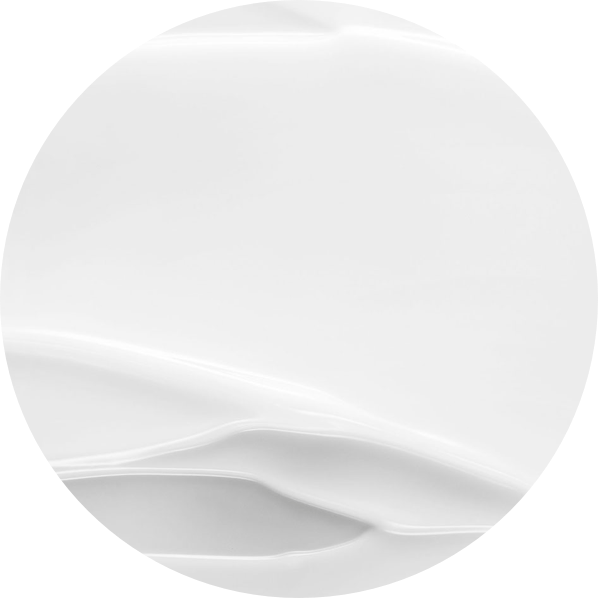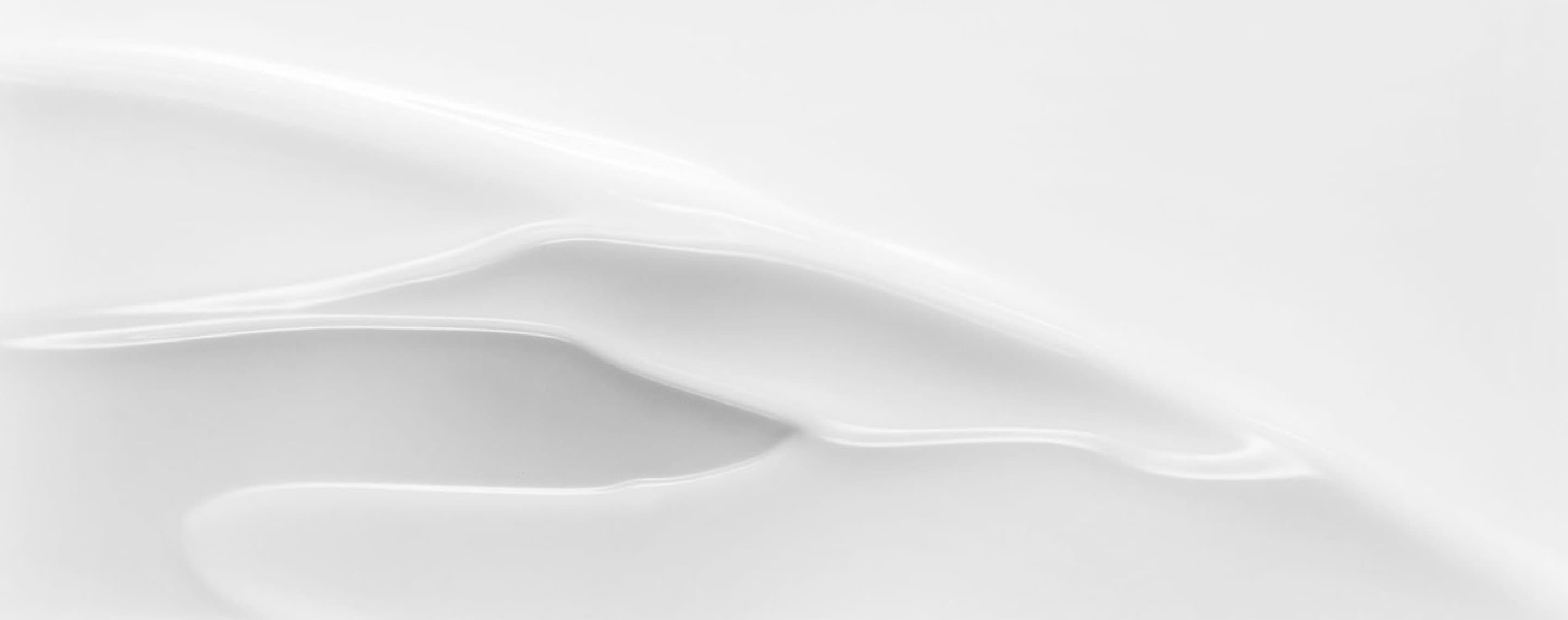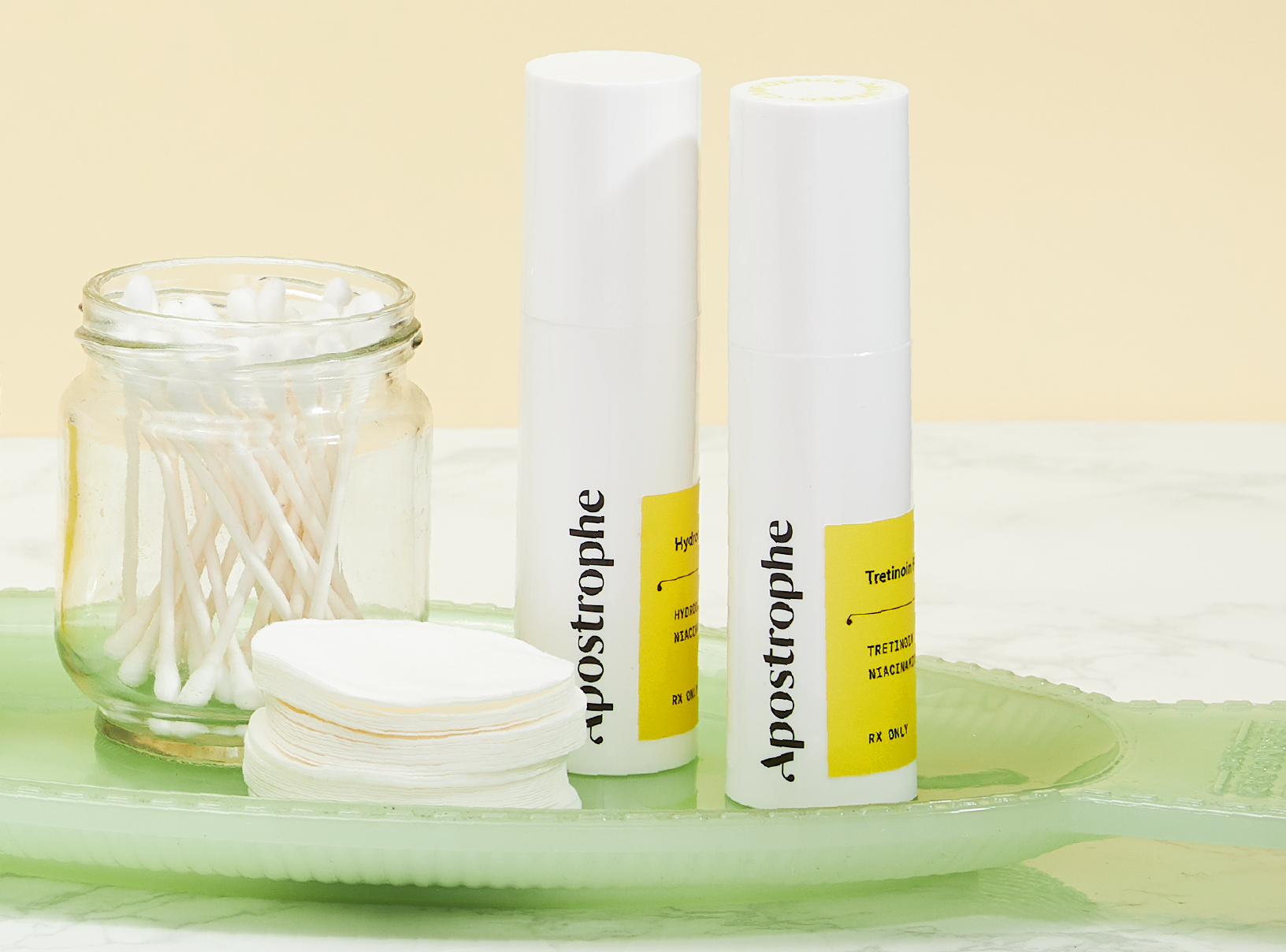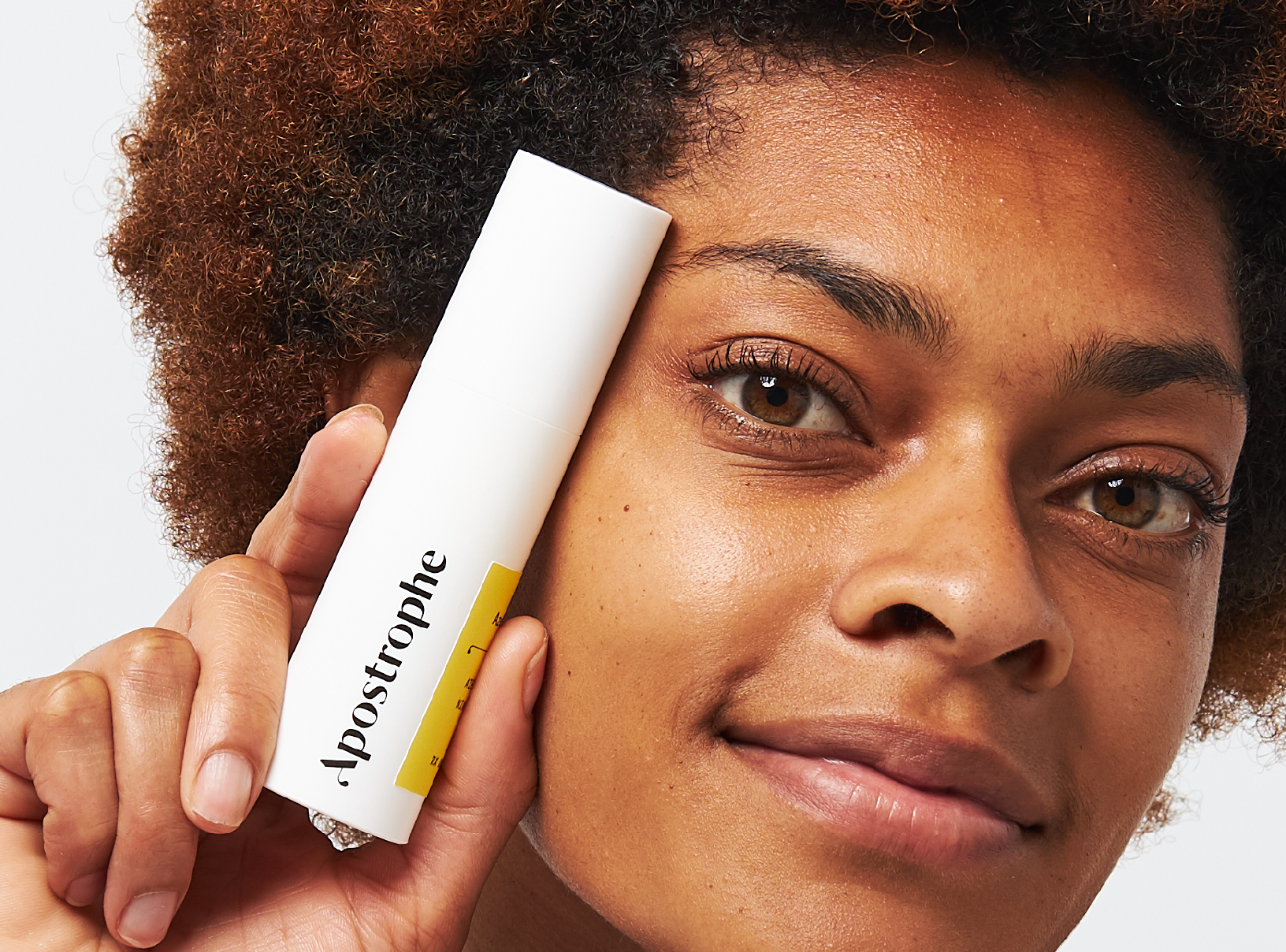Apostrophe Treatments
Niacinamide for skin: a guide


SHARE
Apostrophe Treatments
Niacinamide for skin: a guide
Medically reviewed by Katelyn Hagerty FNP
Written by Apostrophe Team
Last updated 4/1/2024
Every couple of years, whoever’s in charge of spinning the skincare ingredient roulette wheel gives it a turn, and thus the ingredient for the season is announced.
Retinol and vitamin C had their round, and some hyaluronic acid is no doubt perched somewhere in your cosmetics cabinet.
However, one name you’ve no doubt found it difficult to escape in recent times is niacinamide.
These days you can find niacinamide front and center in many serums, lotions, creams, sheet masks, and even capsules — but what does niacinamide really do for your skin?
What Is Niacinamide?
Niacinamide is a form of vitamin B3, and if you remember your nutrition lessons, that means it can be found in foods like liver, chicken breast, salmon, etc.
Before we dive into the outer benefits of niacinamide, you should know that in its generic form — niacin — this vitamin is useful in converting the food you eat into energy.
It also gets a special shoutout for helping speed up cell development in the body.
Because niacin plays such key roles for your wellbeing, one of the last things you want to experience is a severe deficiency of it.
In cases where that happens, you may suffer from a condition called pellagra which produces a range of sometimes colorful effects like:
Discolored rashes
A bright red tongue
Rough and sunburn-like skin
Brown discoloration on the skin following sun exposure
A niacin deficiency can also lead to negative changes in the digestive system, as well as psychological challenges such as depression, apathy, and loss of memory.
If you want to enjoy the benefits of this B vitamin, or would like to make up for its insufficient supply, stocking up on foods high in niacin or using supplements can set you on the right track.
Where you’re looking to cash in on its advantages to the skin, however, especially where targeted problem areas are concerned, topical applications generally get the job done.
Benefits of Niacinamide for the Skin
There’s a reason niacinamide is making star appearances in just about every skincare product you can get your hands on.
This ingredient packs a punch when it comes to improving the appearance of your skin, thanks to its anti-aging, brightening, and anti-acne properties.
Here’s how this vitamin enhances your skin:
It improves skin barrier function
If you spread both of your palms out in front of you, you’ll be looking at the protective barrier or epidermis (outer layer) of your skin.
This barrier provides protection from dangerous external objects, as well as plenty of other benefits, too.
To provide extra support, niacinamide is able to improve the skin’s resistance to outside intruders.
It also encourages the production of ceramides — lipids (fats) which help lock moisture into the skin while preventing dryness and irritation.
Not stopping there, this vitamin also helps to keep the skin looking nice and shiny, by increasing the rate at which you produce new skin cells.
Niacinamide is a potent antioxidant
We’ll save you a Google search. Antioxidants are substances that prevent damage to your body’s cells due to the activities of natural or man-made factors.
This cover is extended to skin cells, which is especially great because they’re prone to damage from external forces like cigarette smoke, dangerous UV rays from the sun, and air pollution.
As an antioxidant, niacinamide is able to counteract the effects of these forces to promote the health of the skin.
It may help to prevent skin redness
Because niacinamide is so good at its day job as an antioxidant and skin barrier protector, nasty intruders are kept away from the skin.
It achieves this by slamming the door on objects that would typically irritate the skin such as harsh soaps, thereby reducing the chances of developing blotchiness or redness on the skin.
However, it’s worth noting that much of the information surrounding this claim is anecdotal and hasn’t been proven.
It helps regulate the appearance of fine lines and wrinkles
Wrinkles and fine lines don’t just appear on the skin overnight.
These signs of aging are usually the result of the gradual reduction in key proteins and dermal collagen — another protein necessary for promoting skin elasticity and structure.
To help with managing the appearance of age on the skin niacinamide brings out the big guns to coax the production of both protein and collagen.
This effect can help to improve skin structure and elasticity, as well as an improvement in barrier function and hydration.
It reduces skin yellowing
Aging is the gift that keeps on giving — especially where the skin is involved.
One of the many changes brought about by this process is your skin begins to take on a yellowish hue.
This color is usually the result of a reaction between certain proteins and sugars in the body that occurs with age.
Using its antioxidant properties, niacinamide is able to prevent this yellowing reaction from taking place, helping to preserve your natural skin tone.
Niacinamide helps manage hyperpigmentation
While it isn’t crystal clear how niacinamide gets the job done, this B vitamin is able to reduce the appearance of hyperpigmentation and pigmented spots on the skin.

HYPERPIGMENTATION TREATMENT
Target dark spots and hyperpigmentation with customized prescription treatment.
One suggestion is that this nutrient is able to prevent the storage and transfer of melanin (the pigment responsible for color) to the skin.
Anti-inflammatory properties help with managing acne
Whether you have adult acne, or are presently in the throes of a teenage acne invasion, niacinamide is a great option to help with managing your condition.
This is made possible through its anti-inflammatory properties which are especially useful for more serious forms of breakouts.
Topical niacinamide may also help with managing acne through features that control the production of sebum or oil in the skin.
Side Effects of Niacinamide For Skin
Niacinamide is a relatively mild addition to the skin.
When applied, this ingredient sometimes produces side effects, but where they do occur, these effects are typically minimal.
Known side effects of niacinamide include:
Skin redness
Itchy skin
Burning skin
These effects usually subside after the skin gets used to the vitamin.
However, in cases where the side effects of niacinamide persist, it would be smart to discontinue its use and report to a healthcare provider.
Using Niacinamide For Skin
Niacinamide is a quadruple threat when it comes to how well it is able to enhance the appearance of the skin.
This vitamin has a slew of protective properties, as seen in its anti-inflammatory anti-aging, and anti-acne effects. It is also able to brighten the skin for a more vibrant tone.
Many Apostrophe topical treatments have niacinamide in their formulations to help with your skin needs.
References
Ods.od.nih (n.d) Niacin. Retrieved from: https://ods.od.nih.gov/factsheets/Niacin-HealthProfessional/
Levin, J., & Momin, S. B. (2010). How much do we really know about our favorite cosmeceutical ingredients?. The Journal of clinical and aesthetic dermatology, 3(2), 22–41. Retrieved from: https://www.ncbi.nlm.nih.gov/pmc/articles/PMC2921764/
Zhang, Q., Flach, C. R., Mendelsohn, R., Mao, G., Pappas, A., Mack, M. C., Walters, R. M., & Southall, M. D. (2015). Topically applied ceramide accumulates in skin glyphs. Clinical, cosmetic and investigational dermatology, 8, 329–337. Retrieved from: https://www.ncbi.nlm.nih.gov/pmc/articles/PMC4493983/
Godic, A., Poljšak, B., Adamic, M., & Dahmane, R. (2014). The role of antioxidants in skin cancer prevention and treatment. Oxidative medicine and cellular longevity, 2014, 860479. Retrieved from https://www.ncbi.nlm.nih.gov/pmc/articles/PMC3984781/
Navarrete-Solís, J., Castanedo-Cázares, J. P., Torres-Álvarez, B., Oros-Ovalle, C., Fuentes-Ahumada, C., González, F. J., Martínez-Ramírez, J. D., & Moncada, B. (2011). A Double-Blind, Randomized Clinical Trial of Niacinamide 4% versus Hydroquinone 4% in the Treatment of Melasma. Dermatology research and practice, 2011, 379173. Retrieved from: https://www.ncbi.nlm.nih.gov/pmc/articles/PMC3142702/
National Institutes of Health. (n.d.). Antioxidants: In Depth. https://www.nccih.nih.gov/health/antioxidants-in-depth
Like what you just read? Sign up for our email list to get the scoop on skincare science delivered straight to your inbox.

Deep Dives
A dermatologist shares his thoughts on the recent studies about benzoyl peroxide and benzene.
Read More
Education
What is milia?
What is milia? Today, we’re jumping into one type of bump that you may have heard about most commonly in infants — milia.
Read More
Education
Best moisturizer for acne-prone skin
If you have combination acne-prone skin, figuring out which moisturizer is best for your skin might be tough. In this guide, we break down the best moisturizer for combination, acne-prone skin.
Read More